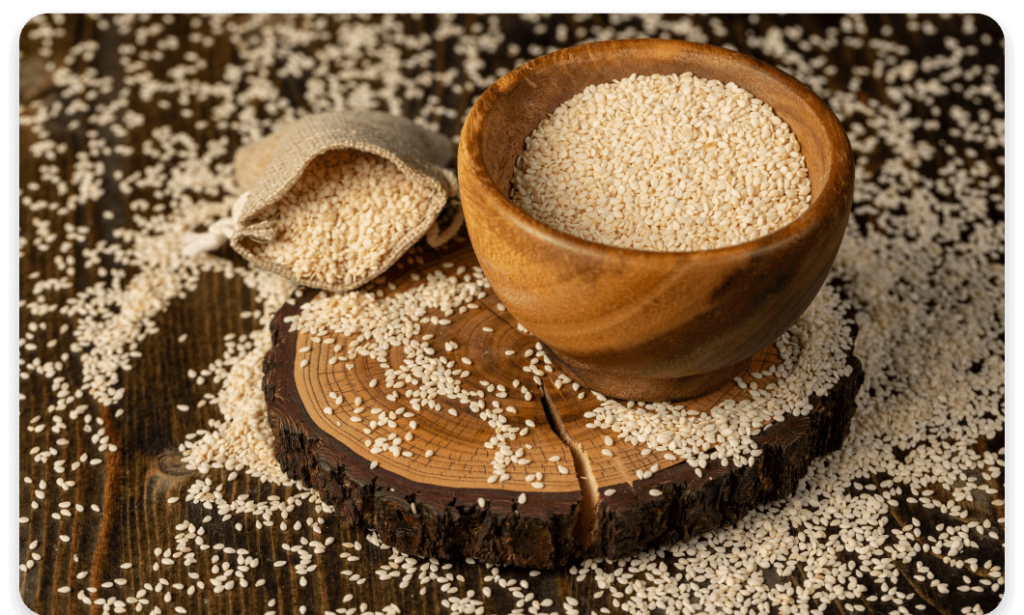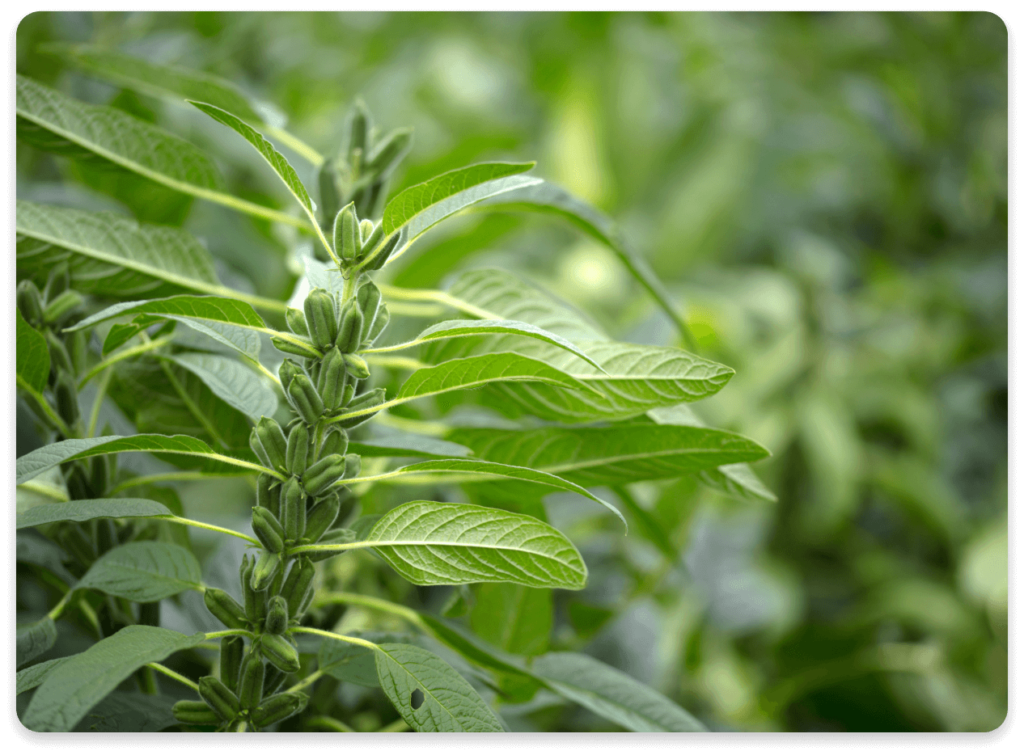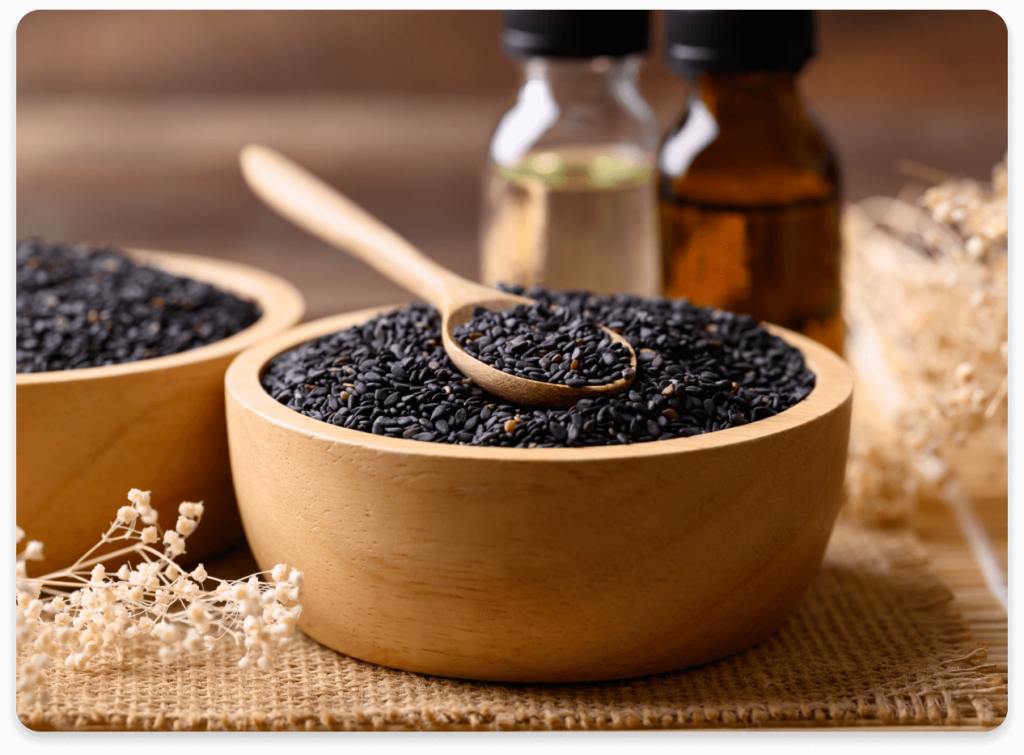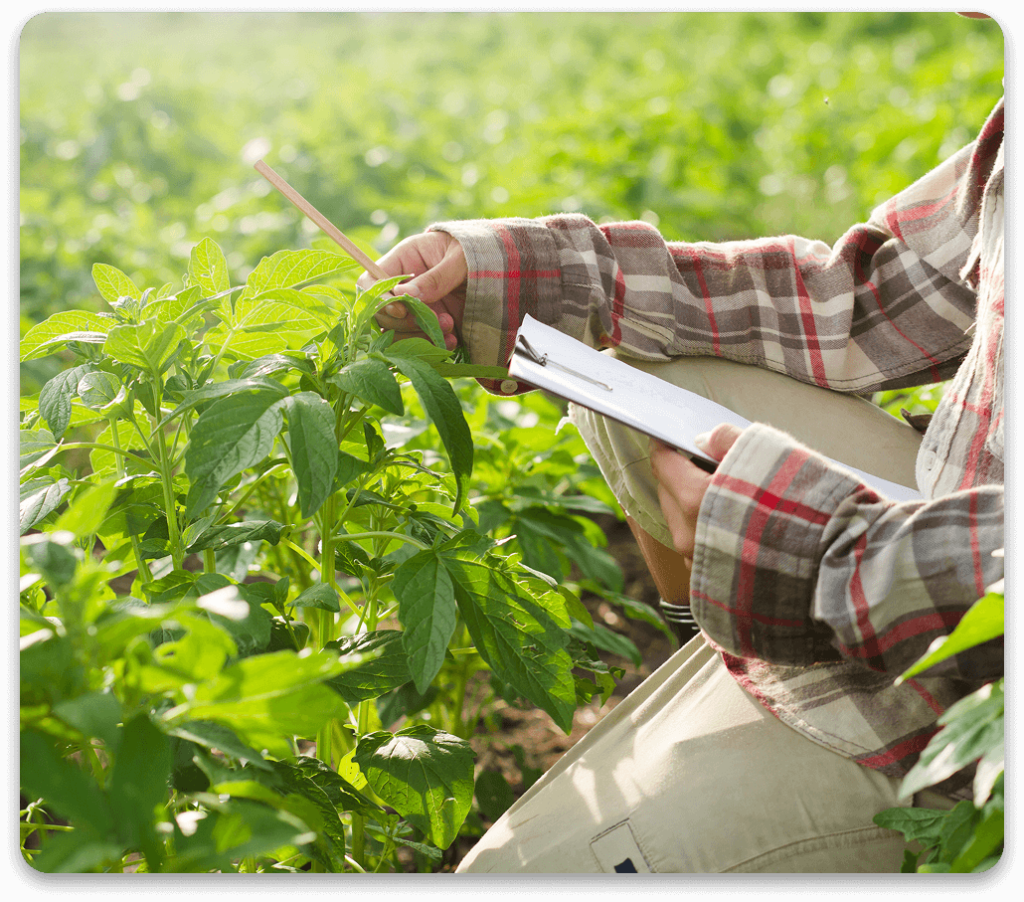

Sesame plants require nitrogen, phosphorus, potassium, calcium and magnesium to grow.
Nitrogenous fertilisers such as urea or ammonium sulfate are commonly used to supplement nitrogen levels in the soil.
Phosphatic fertilisers like single superphosphate or diammonium phosphate are commonly used to supply phosphorus to the soil.
Potassium-based fertilisers like potassium chloride or potassium sulfate are applied to meet the potassium requirements of sesame plants.
Sulphur-containing fertilisers like ammonium sulfate or gypsum are used to supply sulphur to the soil.
Micronutrient-rich fertilisers or foliar sprays are utilised to address micronutrient deficiencies.


Sesame seeds require adequate moisture for successful germination. During this stage, the soil should be kept consistently moist to ensure proper seedling emergence and establishment. Frequent, light irrigation may be required to maintain soil moisture until the seedlings are well established.

During the vegetative growth stage, sesame plants require regular watering to support leaf development, branching and overall plant growth. Maintaining adequate soil moisture levels is necessary to promote healthy and vigorous foliage.
Water availability becomes critical during the sesame plant’s flowering and capsule formation stages. Insufficient water during this period can lead to poor pollination and reduced capsule development. Adequate soil moisture should be maintained to enable this stage.
As sesame plants enter the ripening stage, they require less water compared to earlier growth stages. It is important to allow the soil to dry slightly during this period to prevent excess moisture, which can lead to seed spoilage and diseases. However, the soil should not be allowed to become excessively dry, as it can negatively affect seed quality and yield.

In areas with inadequate rainfall or during dry spells, supplemental irrigation is necessary to meet the water demands of sesame plants. Sesame is relatively drought-tolerant, but irrigation should be provided as and when necessary to prevent prolonged water stress.
It’s important to monitor soil moisture levels regularly and adjust irrigation practices accordingly to ensure that sesame plants receive adequate water during critical growth stages. Local agricultural experts, extension services or experienced sesame growers can provide valuable guidance on specific water requirements for sesame cultivation in a particular region.
Districts: Birbhum, Murshidabad
Districts: Balasore, Mayurbhanj
